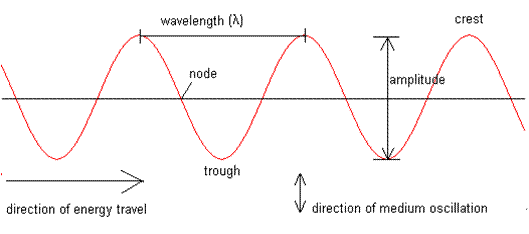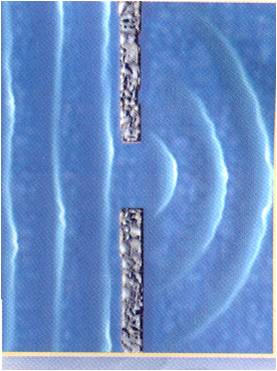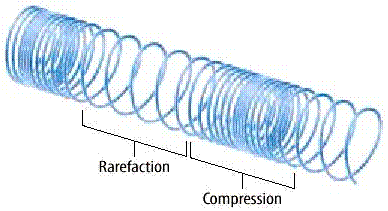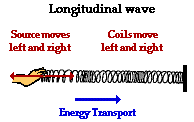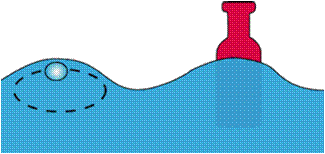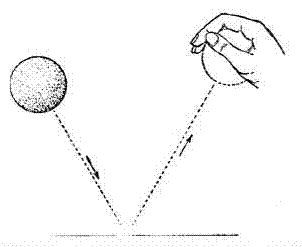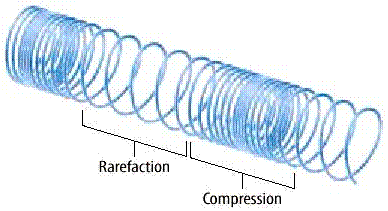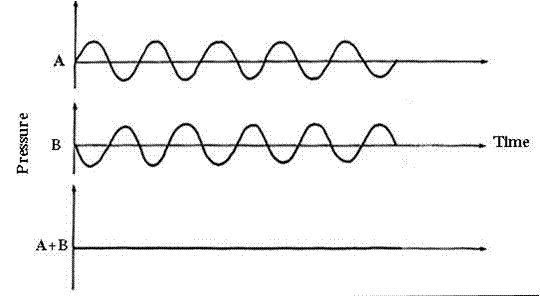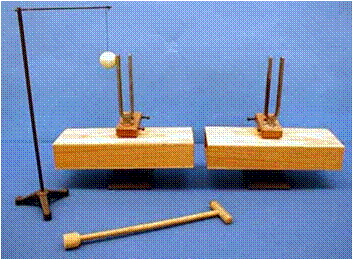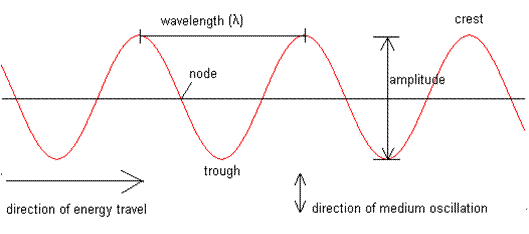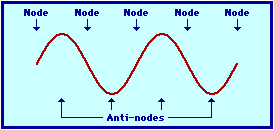Chap. 15-waves (30)
-
The interaction between two waves that meet is called
-
Interference
-
Reflection
-
Refraction
-
Diffraction
-

Reference: Prentice Hall. Use for educational purposes only.
Quiz Preview
- 2.
Waves combine to make a wave with larger amplitude in a process called
-
Constructive interference
-
Destructive interference
-
Reflection
-
Refraction
Correct Answer
A. Constructive interference -
- 3.
The bending of waves due to a change in speed is called
-
Refraction
-
Reflection
-
Interference
-
Diffraction
Correct Answer
A. Refraction -
- 4.
The material through which a wave travels is called a
-
Crest
-
Vibration
-
Trough
-
Medium
Correct Answer
A. Medium -
- 5.
Waves are created when a source of energy causes a medium to
-
Vibrate
-
Compress
-
Expand
-
Move
Correct Answer
A. Vibrate -
- 6.
Waves produced by earthquakes are called
-
Seismic waves
-
Standing waves
-
Transverse waves
-
Longitudinal waves
Correct Answer
A. Seismic waves -
- 7.
The highest parts of a transverse wave are called
-
Nodes
-
Crests
-
Wavelengths
-
Troughs
Correct Answer
A. Crests -
- 8.
The distance between two corresponding parts of a wave is the wave's
-
Amplitude
-
Wavelength
-
Frequency
-
Speed
Correct Answer
A. Wavelength -
- 9.
Frequency is measured in units called
-
Antinodes
-
Nodes
-
Hertz
-
Amps
Correct Answer
A. Hertz -
- 10.
Waves are classified according to
-
Their size
-
How they move
-
Their shape
-
Their source
Correct Answer
A. How they move -
- 11.
An earthquake that occurs underwater can cause huge surface waves on the ocean called
-
Transverse wave
-
S waves
-
Tsunami
-
P waves
Correct Answer
A. Tsunami -
- 12.
The bending of waves around the edge of a barrier is known as
-
Diffraction
-
Reflection
-
Resonance
-
Refraction
Correct Answer
A. Diffraction -
- 13.
A disturbance that transfers energy from place to place is called a
-
Wave
-
Medium
-
Compression
-
Vibration
Correct Answer
A. Wave -
- 14.
Waves that the particles of the medium parallel to the direction in which the waves are traveling are called
-
Surface waves
-
Longitudinal waves
-
Combination waves
-
Transverse waves
Correct Answer
A. Longitudinal waves -
- 15.
Longitudinal seimic waves are known as
-
Transverse waves
-
Surface wave
-
Primary waves
-
Secondary waves
Correct Answer
A. Primary waves -
- 16.
Waves on the top of a pond or lake are
-
Surface waves
-
Tranverse waves
-
Standing waves
-
Longitudinal waves
Correct Answer
A. Surface waves -
- 17.
Waves are created when a source through which CANNOT pass and bounces back, it undergoes
-
Destructive interference
-
Constructive interference
-
Reflection
-
Refraction
Correct Answer
A. Reflection -
- 18.
The speed of a wave is its wavelength multiplied by its
-
Vibration
-
Reflection
-
Amplitude
-
Frequency
Correct Answer
A. Frequency -
- 19.
Which waves arrive at a seismograph first?
-
Transverse waves
-
S waves
-
Surface waves
-
P waves
Correct Answer
A. P waves -
- 20.
In which direction(s) do seismic waves travel from their point of origin?
-
Inward toward the Earth's core
-
In all directions
-
North to south only
-
Toward the equator only
Correct Answer
A. In all directions -
- 21.
Waves combine to produce a smaller or zero-amplitude wave in a process called (look a A+B for the example of the type of wave)
-
Constructive interference
-
Destructive interference
-
Reflection
-
Refraction
Correct Answer
A. Destructive interference -
- 22.
When an incoming wave combines with a reflected wave in such a way that the combined wave appears to be standing still, the result is a
-
Longitudinal wave
-
Transverse wave
-
Standing wave
-
Surface wave
Correct Answer
A. Standing wave -
- 23.
Which of the following affects the speed of sound waves traveling through the air?
-
How loud the sound is
-
The amplitude of the waves
-
How often the sound is repeated
-
The air temperature
Correct Answer
A. The air temperature -
- 24.
What occurs when vibrations traveling through an object match the object's natural frquency?
-
Refraction
-
Reflection
-
Resonance
-
Diffraction
Correct Answer
A. Resonance -
- 25.
The maximum distance that the particles of a medium move from the rest position is the
-
Speed of the wave
-
Frequency of the wave
-
Amplitude of the wave
-
Wavelength of the wave
Correct Answer
A. Amplitude of the wave -
- 26.
Secondary waves CANNOT travel through
-
Earth's crust
-
Rock
-
Earth's mantle
-
Liquids
Correct Answer
A. Liquids -
- 27.
What are the highest and lowest points on a standing wave called?
-
Nodes
-
Antinodes
-
Rarefactions
-
Compressions
Correct Answer
A. Antinodes -
- 28.
Which type of wave caused by an earthquake does the most above-ground damage?
-
P waves
-
Longitudinal waves
-
S waves
-
Surface waves
Correct Answer
A. Surface waves -
- 29.
Scientists on the side of Earth opposite the epicenter of an earthquake detect mainly
-
Surface waves
-
S waves
-
P waves
-
Transverse waves
Correct Answer
A. P waves -
- 30.
What is another use of a seismograph aside from detecting earthquakes?
-
Locating pockets of valuable resources underground
-
Locating gold dust in rivers
-
Predicting accurately when and where volcanoes will erupt
-
Measuring tsunamis
Correct Answer
A. Locating pockets of valuable resources underground -
Quiz Review Timeline (Updated): Jan 10, 2013 +
Our quizzes are rigorously reviewed, monitored and continuously updated by our expert board to maintain accuracy, relevance, and timeliness.
-
Current Version
-
Jan 10, 2013Quiz Edited by
ProProfs Editorial Team -
Mar 10, 2010Quiz Created by
Pcooper
 Back to top
Back to top





